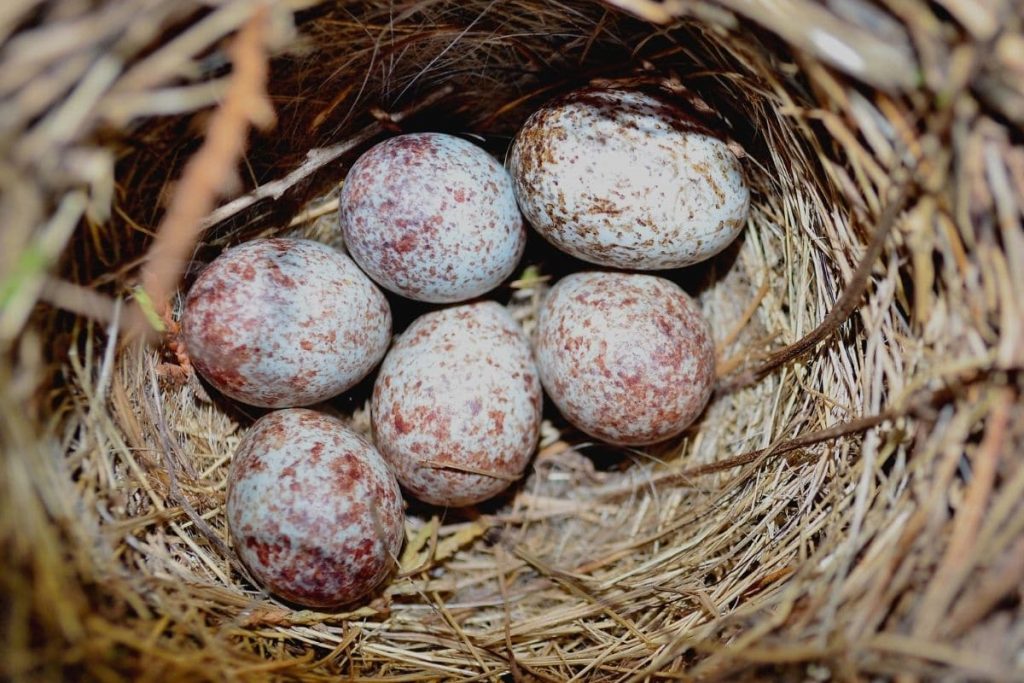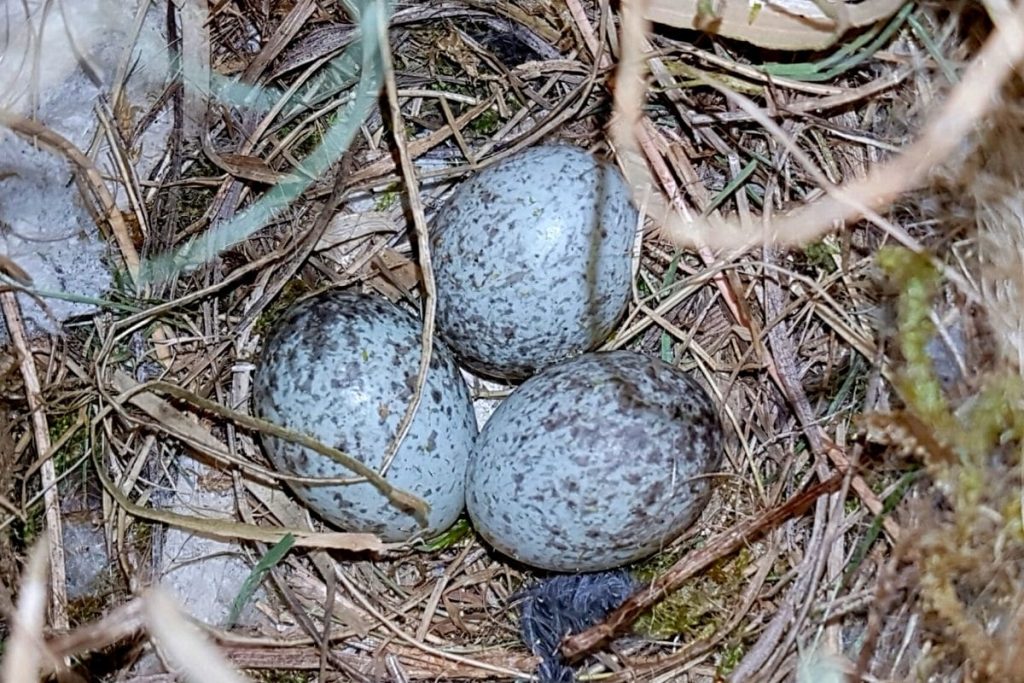The house sparrow (Passer domesticus), popularly known as the “sparrow,” is probably one of the most common birds in Europe. But what do sparrow eggs actually look like? Everything about color, size and general appearance can be found here.
To the point
- the typical appearance of sparrow eggs is a white to greenish ground with dark dots or spots
- each female lays eggs of an individual coloration and pattern, but this is the same for each egg
- the size of the eggs can vary greatly depending on the weather conditions
Contents
Shape and color
Sparrow eggs have an elongated-oval shape with the typical shape known from the hen’s egg:
one pole very flat and almost round
one pole clearly pointed

Color can vary significantly from animal to animal, but remains largely constant per animal from egg to egg:
- basic color white to slightly greenish
- more rarely grayish basic coloration
- gray to brown mottling
- spots partly extremely dense up to the complete covering of the ground color
The size
The average size of sparrow eggs is 15 x 22 millimeters with a weight of about 3 grams. However, this figure should be treated with some caution. Because observations show that the size of the eggs can vary greatly. Thus, even within one year with one and the same female, the volumes of the eggs can vary by up to 50% in each of the 2 to 3 clutches per season.
Science now believes it knows the reason for this: By adjusting egg size to the weather, sparrows provide their offspring with optimal conditions to start life. For while it is generally assumed that a larger egg offers better development opportunities, the state of knowledge is different in the case of the house sparrow. In cold and wet weather, a larger egg provides more nutrient reserves for better chick development. In warm dry weather, on the other hand, the excess supply leads to too rapid development, which causes stress to the organism during development and also later in life. Observations show that these animals have fewer offspring and lower life expectancies.

Note: This relationship may exist in other bird species as well, but has only been documented for the sparrow through observation and study.
The clutch
A look into the sparrow’s nest usually does not show only one sparrow egg. Instead, the typical appearance of the clutch is defined not only by the actual coloration, but also by the number of eggs it contains. Typically there are 4 to 6 eggs per clutch, although rarely 3 or even 7 eggs can be laid.
Frequently asked questions
Why are the sparrow’s eggs speckled?
The sparrow lays its eggs in open nests that are fairly easy to see. The dots or spots serve to blur the outline of the egg and camouflage it as best as possible against the background of the nest.
Where does the slightly greenish coloration of the eggs come from?
Egg color is determined by two pigments that are present to a greater or lesser degree in all birds. One pigment has a blue base color, the other a red to brown base color. Depending on the intensity, ratio of both pigments to each other and layer of occurrence in the eggshell, the coloration can produce almost any color. In the sparrow, a low occurrence of the blue pigment mixed with minimal influences of the red pigment results in a slightly greenish coloration.
Where are sparrow eggs found?
The sparrow is known to be both a niche or cavity nester and an open nester. This means that its nest can be found in tree cavities and nest boxes, as well as in hedges, branch forks, and even on ledges on buildings, rocks, etc. This wide distribution of habitats used contributes significantly to its strong occurrence.

